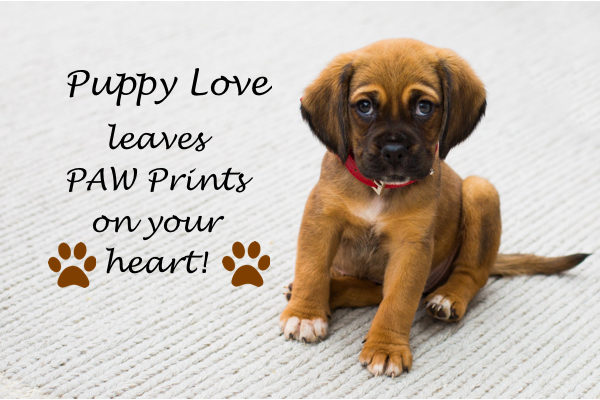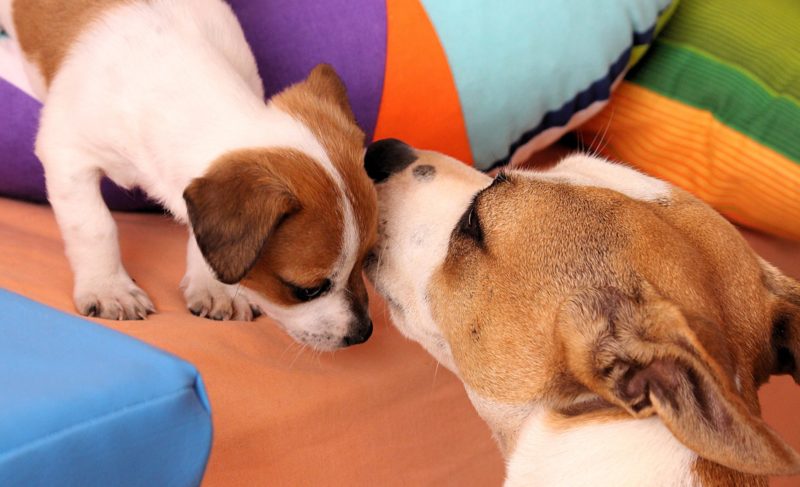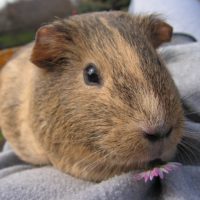How to introduce dogs and puppies to other animals
Here’s a guide to ensure that introducing your puppy or new dog to other animals goes as smoothly and as friendly as possible…

First impressions count when introducing your puppy or new dog
What an exciting day it is when you bring your new puppy or dog home. Everyone wants to meet them and you know that all your friends and family, including the furry and feathered variety, will love this fluffy bundle of puppy fun! Or will they?
Unfortunately the statement “first impressions count” is as true for our pets as it is for people. Start off on the wrong foot (or paw!) and the relationship between your new pup and the other members of your household may never blossom into friendship.
While it is very tempting to introduce your new pup to everyone and everything all at once, imagine how overwhelming it is for a young animal. Not only have you left the security of your mum, siblings and familiar surroundings but you are suddenly tossed into a world of new scents, sounds and other creatures who are wishing you hadn’t arrived at all!
Instead, how much easier it would be if you had time to get to know your new human owners, your bed, food bowl and the daily routine of the house. Then you’d feel settled and ready to get to know your new animal family. A little forethought can ensure that your pup has the best beginning in your household.
Motivate your pets when introducing your new puppy or dog…
Puppies by nature are curious and gregarious creatures and so need little encouragement to meet your other pets. They also want to please their leader and best mate, which, of course, is you. Most puppies also enjoy their food and/or toys. Use all this knowledge to your advantage during introductions.
Also consider what may motivate your existing pets. Cats may enjoy a special treat or simply a stroke along their back. Dogs may like a doggy treat when they sit quietly. Reward the good behaviour of your existing pets during introductions to the new canine arrival.
Encourage any friends and family members you have to help out too. Having one person present for each animal is always a good idea with introductions but ensure they are capable of handling your animals.
Gradually does it when introducing your puppy
Gradual, gradual, gradual. If there is one phrase that behaviourists say more than any others, it would have to be this one.
Give your new pup time to settle in to their new environment before you begin introductions to your other pets. This may be a few hours or even days and when they finally do come face-to-face, a few minutes may be sufficient at first. Control of the situation is extremely important to avoid any negative experiences, so keep at least one of the animals restrained initially until they are used to one another.
Gradually build up the time the animals have together and their freedom within the shared space. Your patience at this stage will help all future interactions between your pets. Go at your pets’ pace.
Introducing your puppy or new dog to other animals… Introductions Pet by Pet
Dog Eat Dog
Individual temperament and experience determine how your older dog will view your new pup. A well-socialised dog will likely have little trouble in accepting a new arrival, if introduced in a calm and controlled manner, but a dog who has little experience with other dogs may need to have assistance in meeting dogs, preferable long before the new pup arrives.
When your pup is settled in at home, bring them out to meet your dog. Keep both animals on a leash at first. Ask your older dog to sit while your pup walks around them on leash. Reward your older dog’s calm behaviour with a treat or praise. Also keep the pup calm.
Allow the two dogs to play for a short spell, if they wish, but monitor the situation carefully. If your older does gets irritated by the young dog’s presence, then separate them. Do not be too horrified if your existing dog tells off the young pup for too-boisterous play. This is natural.
Do not leave the dogs alone together until you are confident that neither dog will get hurt and always make sure that both have a place to retreat to when they need some space.
If you are introducing an older dog, it may be best to do so on neutral ground rather than within your existing dog’s home territory. More about dog aggression.

Moggie Mayhem
As most cat owners know, cats have a way of looking after themselves. Those canines who come close will inevitable get a hiss, a spit, a scratch or a bite. Few dogs make the same mistake twice!
Of course there is the potential for serious damage to one or more species, so go gradually. With one person present for every animal, bring your dog on leash into the room where the cat is present. Ask your pup to sit and reward their calm behaviour. Never ever allow your puppy to chase your cat.
With your cat in a carrying case, allow your pup to sniff through the bars. Do not allow your pup to climb all over the case or bark at the cat, especially if your cat has had little exposure to dogs. When you feel confident in having both animals in the same area without restraint, ensure that each has space to get away from the other.
You may need to relocate your cat’s food dishes and litter trays as puppies have the habit of investigating, playing in and ingesting these!
Rabbits, Rodents and Feathered Friends
Dogs are the natural predators of small mammals such as rabbits, guinea pigs and mice and will give chase when stimulated by the rapid running or fluttering movements of these smaller animals.
Approach these introductions with extreme caution and unless you are present to supervise, you may decide never to allow these species to meet face-to-face, without the safety of a cage or leash.
Dogs that are introduced at a very young age to small mammals and birds will often accept them as family members throughout life and it can be a joy to watch your rat crawl all over your dog!. This is the exception to the rule, however, and if you want these animals to become firm friends then you will have to put in the effort.
Gregarious Goldfish
In general, dogs and fish in fish tanks are fairly safe together, providing the tank has a lid on it. Supervise the first couple of meetings to ensure the dog does not jump against the tank.
Ponds in the garden may require a little more work. Some dogs will go fishing whilst others are content to paddle! Be careful with your young puppy around water until you know that he can safely get into and out of the water (or keep it covered) and doesn’t drink too much pond water!
Horse Harmony
If you have a horse, then chances are they have already been exposed to dogs in the past. If they are fearful, then you may need to work on this prior to bringing your pup home.Horses are prey species and so naturally will fear dogs, their potential predators. Keep your pup on leash and reward their quiet behaviour around your horse. Give your horse a special treat for accepting your new dog.
Humans too
It is important when introducing your puppy that you do the intros to a variety of people – men, women, and children of all ages. Reward your pup’s calm behaviour around people. This process of socialisation is one of the most important stages of your dog’s life so ensure that you give her lots of positive experiences like puppy pre-school, as well as some basic obedience training to teach good manners.
Remember: We all make mistakes…
Don’t feel too guilty if all does not go according to plan or you have a setback or two in the introductions phase. Establishing relationships takes time and your pets have to get to know one another’s personality and behaviour.
If things are not going well, go back to the beginning with introducing your puppy or dog. If it is too difficult, seek help from your vet, a dog trainer or an animal behaviourist if you have difficulty in establishing or maintaining good relationships between your new puppy and other family members.
About the author
Dr Jo Righetti is an animal behaviourist and owner of business and website Pet Problems Solved. More about Jo here.
10 Tips for a Happy Household
1. Patience is the key to all successful introductions.
2. Acceptance may be more realistic than “Best Friends”.
3. Expect some hiccups along the way.
4. Praise is kinder than punishment.
5. Motivate your pets to like one another.
6. Understand their natural relationship eg predator-prey.
7. Pets need space too.
8. Pets need routine and consistency.
9. Seek help to restore harmony.
10. Give your existing pets lots of attention.
You can hear Dr Jo Righetti explain how to introduce various pets in the podcasts listed below
Paw Perfect Introductions Podcasts
Pets4Life recently put together a series of podcasts to help pet owners introduce kittens, puppies, cats, dogs and babies to one another. Listen to myself, Dr Jo, and Cathy Beer from Pets4Life on these Paw Perfect Introductions Podcasts and learn how to successfully introduce a new furry member to your family
Thinking of introducing another cat or dog or getting a pet for the kids or you have pets and you’re expecting a baby? Don’t just leave it to chance and assume your pets and human family members will know how to get along together. Listen to our Paw Perfect Introductions podcast for great tips to help you create harmony in your household and avoid pet stress.
Animal behaviourist Dr Joanne Righetti, Pet Problem Solved, will simply explain step by step how to do paw perfect introductions between cats, dogs, babies and children. The Paw Perfect Introductions podcast will cover every combination of introductions we can think of!
Each episode will focus on one ‘paw perfect’ introduction, keeping the podcast under 10 minutes. It could be a few minutes well spent if it means everyone gets along well together.
Listen to the Paw Perfect Introductions podcasts on iTunes or click on an episode below to listen to the podcast or download the transcription.
Listen Now
Episode eight: Introduce your baby to a kitten or adult cat
Episode seven: Introduce your baby to a puppy or adult dog
Episode six: Introduce your cat to a new baby
Episode five: Introduce your dog or puppy to a new baby
Episode four: Introduce a dog or puppy to your cat
Episode three: Introduce a second cat to your cat
Episode two: Introduce a cat or kitten to your dog
Episode one: Introduce a second dog or puppy to your dog
More about your choice of pet
- 10 Fascinating Facts about Chameleons

- 10 Fun Facts About Micropigs

- 10 reasons why guinea pigs make great pets

- 10 Things to consider before you choose a pet

- 10 Ways to Choose a Pet

- 10 Weird And Wonderful Facts About Reptiles

- 12 Fascinating facts about ferrets

- 3 of The Best Dog Breeds For People With Allergies

- 5 Facts About Lovebirds















